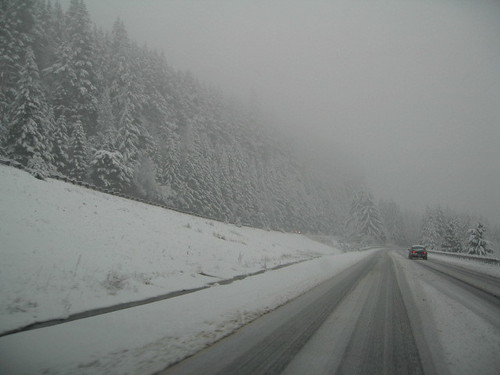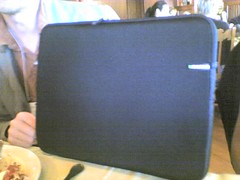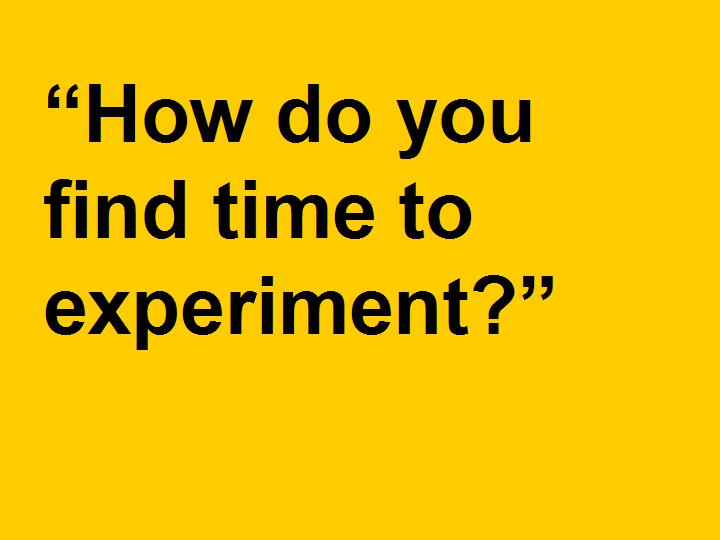More Percolating on Collaboration with my Network
One thing that Newton and Levinson mentioned is a prevailing belief in mental health, educational, professional, and business organizations generally that "... committees and other work groups are essentially incapable of productive work .... The 'real work' ... is done outside of the meetings by one or two powerful individuals." Now this was 1973, but I remember hearing and believing the same thing when I worked for a Fortune 500 company between 1985 and 2001. And sometimes I feel the same way about the work of scientific NGOs. So how are the new technologies and exigencies and the rapid pace of 21st century life actually influencing organizations and their work groups? Does this work group analysis framework help us assess how we're doing? I think it might, but I'd like to have (or see) some first-hand experience and to see current assessments of organizational life. I've talked with colleagues at large companies where IM has replaced e-mail and even the phone for quick interrupts and messages. Sounds right; let's use e-mail for correspondence -- it works well for that. But the same problems of bureaucracy and size obtain. At SXSW2006 Interactive several sessions featured presentations by young entrepreneurs on the issues of building and running a business. Guess what? They still had to manage issues resulting from the division of labor and authority. I didn't hear how well they were handling the personal and personnel issues, but I did hear that web-based, collaborative, planning and project management tools (Basecamp was a prominent example) definitely helped distributed teams manage their work. That's progress. But no matter how far the technologies can take us, they're not enough. We still need to solve the human and practical problems of working together. What tools, intellectual and operational, do we have to help us? Networks Networks are pervasive – they form the backbone of our society, our biology, and our world. Networks exist in every aspect of life – including – literally - our DNA. We see networks in our travel system – how our airlines works, our family and work relationships. We identify our selves with particular organizations – churches or religious body. Networks are the girder around which society, and life itself, are formed. The network serves as an offloading tool – holding knowledge. In a sense, the networks we create become our learning – that is, our capacity to stay current, informed, and knowledgeable. Unfortunately, in the softer sciences – such as our understanding of learning – we have largely ignored the power of networks. That’s beginning to change with increased understanding of neural networks and secrets being pried from the former black box of the human mind. But overall, little network-thinking makes its way explicitly into our learning design. Our training systems should foster deeper levels of networking – forming connections with knowledge sources that will serve us well even as existing knowledge is eroded and rendered obsolete by the acidic nature of change. Network formation is the act of sharing and distributing knowledge. A course provides for short-term knowledge needs. A well-crafted network, provides for continual, life-long learning... Betting against networks is, in the eyes of CEO of Google Eric Schmidt “foolish you’re betting against human ingenuity and creativity”. Ecologies Networks need to occur in something. Networks are structures. We need to create diverse ecologies in which networks can grow and flourish. An ecology is a chaotic messy space that enables individuals to learn and form connections... Systems All of this needs to happen in a systems model – where we see holistically, rather than isolated elements... As learning moves deeper and deeper into mission-critical status in our organizations, we must begin to perceive it in its entirety – making distinctions of approach and form based on our intended outcome or objectives. We need to pursue a balanced and holistic view. Context Context is the key. Failure to account for context in learning planning and design may add more confusion, rather than clarity, to a learning challenge. Holistic views of learning and knowledge development translate to corporate bottoms lines; to better learning in a classroom; to more fully equipped members of society. Numerous elements are involved in the interplay – the hard elements of rules and structures, with the soft elements of human behaviour, motivation, incentives, or ideals.
True to form, my network of thinking partners have taken the ideas from Chocolate and Collaboration and offered more food for thought - mental chocolate for me . Before these additions all scroll away in time, I want to capture the thoughts, as they are useful in helping me advance my understanding of this tripartate view of collaboration.
Bev Trayner, in the comments, asks:I'm interested to know where you think multimembership fits in all this. Is it the same as networked collaboration? Or one step further away?
Great question. I think multimembership is a practice that allows us to span across team, community and network forms of collaboration. I was chatting on Skype this afternoon with Shawn, and we were thinking about what binds all three levels of collaboration, and WHO binds them from an organizational perspective. I suspect the people who are good at multimembership (mavens, connectors) are critical to creating the ecology between them. So I don't think multimembership IS networked collaboration, but it is a practice that spans and connects. Does that make sense? What is your view, Bev?
Sandra Dickinson ponders...I wonder if what I want to see happen is beyond even "network" collaboration? We've been struggling to get to point A (team collaboration) effectively. But, once everything we thought we knew about collaboration busts wide open, isn't anything possible?
Busting wide open. Yup, exactly. And from an organizational or even individual perspective, this can be daunting and overwhelming. I suspect telling grounded, practical stories of how this happens is critical. I was listening to a recorded presentation by Euen Semple today and it was filled with examples and stores where I was thinking - hm, team, hm, community, hm, network. It gave me a lens to think about his examples.
Stephanie West Allen points to some useful resources on teaming and collaboration. Thanks, Stephanie. As I searched for the stuff you recommended, a lot came up about conflict resolution. That is an interesting piece of all this. It seems to me that we need conflict resolution at the team and sometimes community level, but we can walk away at the network level without ever needed to resolve the conflict. That is another interesting thing to think about. What does it mean? It may tie to what Stephen Downes said about the emotional and intellectual bits of these types of collaboration.Nancy White explores the different flavours of collaboration: "It is the collaboration chocolate confection. There is that perfect truffle center, rich and dark (the team). There is the robe of chocolate, dusting of cocoa, the company of other truffles nearby (the community). Then there is the fantastic universe of chocolate, the breadth and dizzying depth of possibility (the network)." All very well, but when is each appropriate? I have suggested that some are more appropriate when an emotional connection is needed, while others are more so when an intellectual connection is needed. Which is why I have questioned the need for things like teams and groups in learning.
I really like what you, Stephen, wrote about groups in your Half an Hour blog, but I'm not sure my experience resonates with the distinction between emotional and intellectual connection. For me, there is an emotional element - a richness and sometimes pain - at all three levels of team, community and network. I think this may be more of a reflection of our personal preferences, cultures and experience that a feature of any of the types. That said, the question about when each form is appropriate (I would say USEFUL) is essential. And I don't think there is a black and white answer. Again, I can find as many exceptions to any rule I can dream up. So perhaps the key here is how can people figure out what is useful in any context? Are there some heuristics? Rules of thumb?
George Siemens writes:I value Nancy's measured approach by taking time to define context of appropriate use for teams, communities, and collaboration in her post Collaboration and Networks...too often, we try and obliterate the old to make room for the new. I'm inclined, however to call networks the meta-component...with other elements comprising a part. For example - a hierarchy is a type of network. So is a community. The key distinction rests in what type of network it is - for example, an effective network is one that allows maximum autonomy of individual nodes and greatest capacity for knowledge flow. Hierarchies and communities permit a certain type of knowledge flow...but with restrictions due to the nature of each network. For example, a community serves a particular need, and the individual network nodes may be silenced (intentionally or otherwise) as the community moves toward its intended target.
Hm, yes. The darn definitional problem. I was using the network word pretty loosely so now I need to think about this a bit more. Using knowledge flow is certainly one view. I think "getting stuff done" is another. I'm not sure where I'm going with this. Still thinking. Regardless, I'm nodding in STRONG agreement about the idea of an ecology, but again, I think it is about more than network information. Or maybe work is a form of information. Hm.
Networks (as Nancy alludes) need to occur within something - namely an ecology or space that fosters and enables the greatest capacity for network formation. Networks and ecologies, considered together (and in light of a systems approach) provide provide the basis for our learning needs today.
Bill Anderson has two touch points Today Nancy White wrote about collaboration and group size. It's a very generative post and Nancy speculates about what collaboration means in large networks. I'm not sure I agree with her, but this is a start towards developing concepts and models that can help.
OK, Bill, I want to know what you think. Where are the question/disagreement points? I always find your thinking useful. Your earlier blogpost about organizations sure links into the team/community level. Make sure you read the comments from this post, as they have a lot of good substance on the topic of team based collaboration.
George Siemens also posted a very interesting piece which touched deeply on networks yesterday and as I read it I kept thinking, yeah, this is a big part of what I'm trying to get my head around...
Lots of mental chocolate truffles there.
Finally Chris Harvey said...
Pretty amazing.














I think a lot of online communities could benefit from modelling themselves on the Free software community